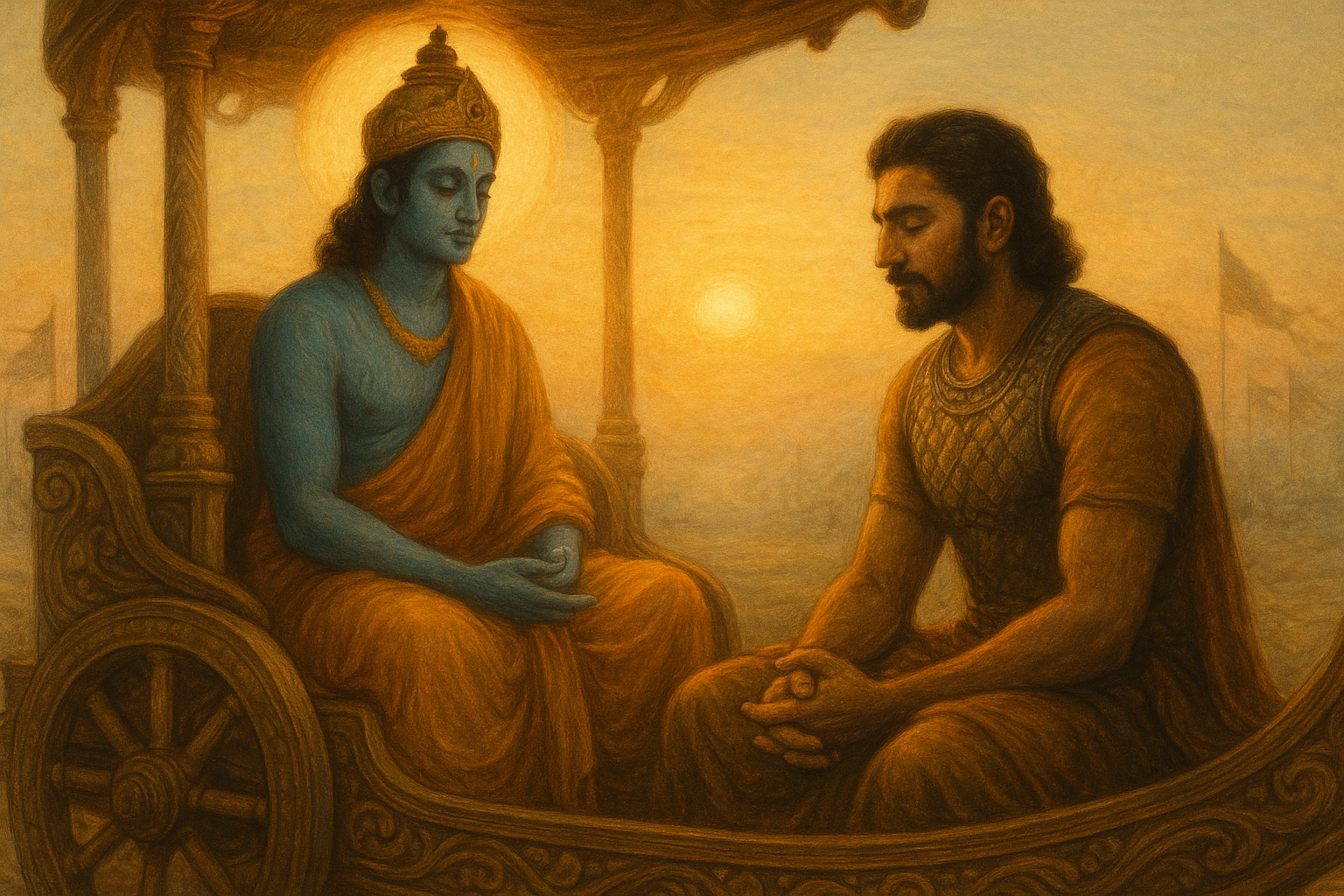The Essence of the Bhagavad Gita in Five Verses
न जायते म्रियते वा कदाचि
नायं भूत्वा भविता वा न भूय: |
अजो नित्य: शाश्वतोऽयं पुराणो
न हन्यते हन्यमाने शरीरे || 2.20|
Shariram anityam shariri nitya: The body is temporary; the atman is eternal and never dies. Verse 2.20 says, na hanyate hanyamane sharire – the atman is not killed when the body is killed.
योगस्थ: कुरु कर्माणि सङ्गं त्यक्त्वा धनञ्जय |
सिद्ध्यसिद्ध्यो: समो भूत्वा समत्वं योग उच्यते || 2.48||
Samatvam yoga uchyate: Verse 2.48 teaches, yogasthah kuru karmani sangam tyaktva. Live life with the mindset of a yogi – yogi bhava - without attachment to material things, accepting the good and the bad, joy and sorrow that come your way. Do nishkama karma – Karmayoga, offering the results to a higher power.
श्रेयान्स्वधर्मो विगुण: परधर्मात्स्वनुष्ठितात् |
स्वभावनियतं कर्म कुर्वन्नाप्नोति किल्बिषम् || 18.47||
Svadharmah: Verse 18.47 emphasizes the greatness of fulfilling one’s duty—shreyan svadharmo. Virtue reaches its highest form in faithfully carrying out responsibilities. If you do your duty, napnoti kilbisham, you do not incur sin.
विद्याविनयसम्पन्ने ब्राह्मणे गवि हस्तिनि |
शुनि चैव श्वपाके च पण्डिता: समदर्शिन: || 5.18||
Sama darshanah – Verse 5.18 states that an enlightened person perceives all as equal. Such a pandit understands that a learned Brahmin, a cow, a dog, and a dog-eater possess the same essence.
श्रीभगवानुवाच |
प्रजहाति यदा कामान्सर्वान्पार्थ मनोगतान् |
आत्मन्येवात्मना तुष्ट: स्थितप्रज्ञस्तदोच्यते || 2.55|
Sthitha prajnah: Verse 2.55 teaches that a person with a balanced mind is satisfied within the self—atmaneva atmana tushta. Being established in the state of Brahman is Brahmi stithi, where you remain unaffected by the chaos of the world. In such a state, it is easy to maintain equanimity and be a sthitha-prajna.

